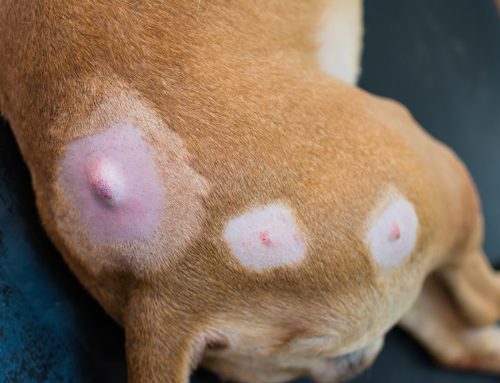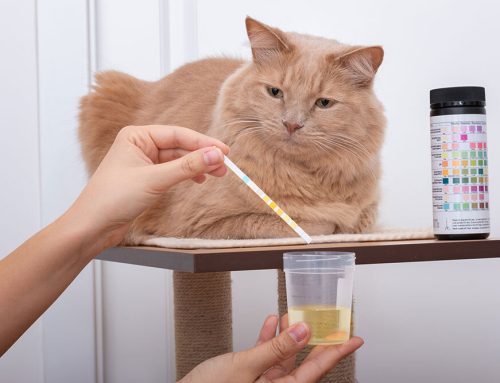According to a Pet Obesity Prevention Survey, approximately 60% of pets are overweight in the U.S., making it the most common preventable health problem. Overweight pets face challenges with their health, mobility, and longevity. At Palm City Animal Medical Center, our team can work with you to develop a weight management plan specifically for your pet, and provide the tools you need for a successful program.
Why does it matter if my pet is overweight?
We want our furry companions to be with us as long as possible, but an overweight pet’s lifespan can be shortened by two years or more. Overweight pets also tend to be more sedentary and less interactive with their owners.
Health risks associated with overweight pets include diabetes, high blood pressure, respiratory disease, some cancer types, anesthetic complications, joint or ligament injuries, and arthritis. Researchers have discovered that fat secretes hormones that create a chronic inflammatory condition, which causes stress on body tissues. Excess weight can sometimes also indicate diseases, such as an underactive thyroid gland (i.e., hypothyroidism), or an overactive adrenal system (i.e., Cushing’s disease).
How can I tell if my pet is overweight?
Almost 40% of pet owners don’t realize that their pet is overweight, and many pets are not in ideal body condition. A quick at-home test for dogs is to place your flat palm against the side of their chest and, if you need to press firmly to find their ribs, they are overweight. This test doesn’t work as well for cats, however, because an overweight cat’s belly tends to be larger than their chest. Our Palm City Animal Medical Center team can give you the best, most impartial assessment of your pet’s weight status. We will examine your pet and give them a body condition score (BCS) that shows where they rate on a numerical scale.
How did my pet get overweight?
We know that weight gain occurs from taking in more calories than are expended during the day. But, what if you are feeding your pet according to the pet food label, and they are still overweight? Feeding directions are required on all pet foods, but many recommended serving sizes are for different pets with different activity levels, and don’t match your individual pet or their lifestyle.
How can I safely reduce my pet’s weight?
Many pet store weight loss foods are not as effective as prescription diets, and simply reducing your pet’s food intake can cause malnutrition. At Palm City Animal Medical Center, we recommend a comprehensive weight reduction program tailored for your pet. We start by looking at your pet’s BCS and determine their ideal weight based on age, breed, and overall bone structure. Diagnostic lab work also may be needed to update their health profile and screen for underlying diseases. We then calculate your pet’s caloric requirements, and recommend the food type and quantity, feeding frequency, and amount of daily exercise they need.
A weight reduction program for your pet is a slow process and requires commitment from all family members. For many pets, reaching their ideal weight may take six to eight months or longer. The goal is to lose excess fat while maintaining muscle mass. A weight reduction program for cats especially needs to be slow, to avoid negative effects on their liver, including a dangerous condition called hepatic lipidosis.
How to implement a weight reduction program for your pet
A successful weight reduction program for your pet includes the following changes in diet and exercise.
- Feeding tips:
-
- Slowly introduce a new prescription weight loss diet over one to three weeks.
- Measure your pet’s daily recommended food quantity, and be consistent with the timing and amount of your pet’s meals.
- Ensure that all family members are on board with the program.
- Avoid using a self-feeder, because your pet may eat their entire daily portion at once. Try using a timed feeder, or a microchip-monitored feeder, to give your pet a specific amount of food at specific times.
- Feed pets separately if only one pet is overweight.
- Try feeding your cat canned food, which is lower in carbohydrates.
- Use a food puzzle to help your pet eat more slowly, and to provide mental stimulation.
- Substitute table scraps or high calorie treats with a few pieces of your pet’s measured kibble, or try vegetables such as carrots, broccoli, or green beans.
- Exercise tips:

-
- Walk your dog more frequently, for longer periods of time, to help burn calories and distract them if they are pestering you for food.
- Bring your dog to Sandy Paws Day Spa, our state-of-the-art daycare facility, to provide more exercise and some happy social time.
- Consider our rehabilitation services if your pet is an overweight senior, or has mobility issues—we can help safely increase their activity level, as well as enhance their muscle strength.
- Stimulate your cat to exercise with a tall cat tree for climbing or a harness and leash for safe outdoor activity, or make them hunt by hiding their measured amount of food in multiple places indoors. Increase playtime using toys with feathers or that make noises, but change them regularly, because cats can become easily bored with the same toys.
Make an appointment at Palm City Animal Medical Center for a weight check, a weight management consultation, or a progress check. We are here to help your pet reach and maintain a healthy weight for a healthy life.








Leave A Comment